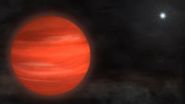(Press-News.org) PHILADELPHIA— Medical physicists at Thomas Jefferson University and Jefferson's Kimmel Cancer Center are one step closer to bringing a new tumor-tracking technique into the clinic that delivers higher levels of radiation to moving tumors, while sparing healthy tissue in lung cancer patients.
Evidence has shown a survival advantage for lung cancer patients treated with higher doses of radiation. Therefore, there is an increased interest to find novel ways to better track tumors—which are in constant motion because of breathing—in order to up the dosage during radiation therapy without increasing harmful side effects
After proving its success in simulations, researchers have now shown that their real-time tracking technique can achieve such tasks. Not only can it better predict and track tumor motion and deliver higher levels of radiation to lung cancer patients and others with moving tumor targets, it can also successfully be implemented into existing clinical equipment (i.e., Elekta Precise Table).
The results of the study, led by Ivan Buzurovic, Ph.D., a medical physics resident and researcher in the Department of Radiation Oncology at Thomas Jefferson University, and Yan Yu, Ph.D., Professor, Vice Chair and Director of Medical Physics at Thomas Jefferson University, were published in the November issue of Medical Physics.
"We've shown here that our system can better predict and continuously track moving tumors during radiotherapy, preventing unnecessary amounts of radiation from being administered to unnecessary areas," said Dr. Buzurovic. "Just as important, we've successfully modified existing technology to integrate with the system to perform the tracking and delivery, meaning no additional robotic systems is needed."
Respiratory and cardiac motions have been found to displace and deform tumors in the lung and other organs. Because of this, radiation oncologists must expand the margin during radiotherapy, and consequently a large volume of healthy tissue is irradiated, and critical organs adjacent to the tumor are sometimes difficult to spare.
In an effort to shrink that margin, Jefferson researchers developed a new, robotic technique that better tracks tumor motion to deliver more precise radiation.
Here, the researchers applied a new control system (software and hardware) and robotic technology to existing treatment couches used for radiation therapy to determine the tracking technology's feasibility in a clinical setting.
They found the technology can be integrated onto treatment couches and validated the tumor tracking system capabilities to follow desired trajectories. When the active tracking system was applied, irradiated planning target volume (the area set for treatment) was 20 to 30 percent less for medium size tumors and more than 50 percent for small size tumors.
"The use of tumor tracking technology during radiotherapy treatment for lung cancer would result in significant reduction in dose to critical organs and tissue, potentially decreasing the probability or severity of side effects, and thus improving cancer treatments," Dr. Yu said.
Based on these results, it can be hypothesized that clinical implementation of real-time tracking is feasible for achieving potentially improved patient outcome.
"With this new technique, it shrinks the margin, and radiation oncologists would be able to administer more radiation and faster to the tumor than conventional methods," said Adam P. Dicker, M.D, Ph.D., Professor and Chairman of the Department of Radiation Oncology at Thomas Jefferson University. "And a higher, more targeted dose means a better cure in lung cancer."
### END
New tumor tracking technique may improve outcomes for lung cancer patients
Real-time approach tracks and radiates moving tumors and spares healthy tissue
2012-11-20
ELSE PRESS RELEASES FROM THIS DATE:
Multiple sclerosis 'immune exchange' between brain and blood is uncovered
2012-11-20
DNA sequences obtained from a handful of patients with multiple sclerosis at the University of California, San Francisco (UCSF) Medical Center have revealed the existence of an "immune exchange" that allows the disease-causing cells to move in and out of the brain.
The cells in question, obtained from spinal fluid and blood samples, are called B cells, which normally help to clear foreign infections from the body but sometimes react strongly with the body itself. One of the current theories of multiple sclerosis, which strikes hundreds of thousands of Americans and millions ...
Comments, traffic statistics help empower bloggers
2012-11-20
UNIVERSITY PARK, Pa. -- Whether bloggers are writing to change the world, or just discussing a bad break-up, they may get an extra boost of motivation from traffic-measuring and interactive tools that help them feel more connected to and more influential in their communities, according to researchers.
In a series of studies, female bloggers showed that they enjoyed blogging because it made them feel empowered and part of a community, said Carmen Stavrositu, who recently completed doctoral work in mass communications at Penn State. The studies also indicated that the sheer ...
Failed explosions explain most peculiar supernovae
2012-11-20
Supercomputer simulations have revealed that a type of oddly dim, exploding star is probably a class of duds—one that could nonetheless throw new light on the mysterious nature of dark energy.
Most of the thousands of exploding stars classified as type Ia supernovae look similar, which is why astrophysicists use them as accurate cosmic distance indicators. They have shown that the expansion of the universe is accelerating under the influence of an unknown force now called dark energy; yet approximately 20 type Ia supernovae look peculiar.
"They're all a little bit ...
Scripps Research Institute team identifies a potential cause of Parkinson's disease
2012-11-20
LA JOLLA, CA – November 19, 2012 – Deciphering what causes the brain cell degeneration of Parkinson's disease has remained a perplexing challenge for scientists. But a team led by scientists from The Scripps Research Institute (TSRI) has pinpointed a key factor controlling damage to brain cells in a mouse model of Parkinson's disease. The discovery could lead to new targets for Parkinson's that may be useful in preventing the actual condition.
The team, led by TSRI neuroscientist Bruno Conti, describes the work in a paper published online ahead of print on November 19, ...
Astronomers pin down origins of 'mile markers' for expansion of universe
2012-11-20
COLUMBUS, Ohio – A study using a unique new instrument on the world's largest optical telescope has revealed the likely origins of especially bright supernovae that astronomers use as easy-to-spot "mile markers" to measure the expansion and acceleration of the universe.
In a paper to appear in the Astrophysical Journal, researchers describe observations of recent supernova 2011fe that they captured with the Large Binocular Telescope (LBT) using a tool created at Ohio State University: the Multi-Object Double Spectrograph (MODS).
MODS measures the frequencies and intensities ...
Smoking in pregnancy tied to lower reading scores
2012-11-20
Yale School of Medicine researchers have found that children born to mothers who smoked more than one pack per day during pregnancy struggled on tests designed to measure how accurately a child reads aloud and comprehends what they read.
The findings are published in the current issue of The Journal of Pediatrics.
Lead author Jeffrey Gruen, M.D., professor of pediatrics and genetics at Yale School of Medicine, and colleagues analyzed data from more than 5,000 children involved in the Avon Longitudinal Study of Parents and Children (ALSPAC), a large-scale study of ...
Astronomers directly image massive star's 'super-Jupiter'
2012-11-20
Astronomers using infrared data from the Subaru Telescope in Hawaii have discovered a "super-Jupiter" around the bright star Kappa Andromedae, which now holds the record for the most massive star known to host a directly imaged planet or lightweight brown dwarf companion.
Designated Kappa Andromedae b (Kappa And b, for short), the new object has a mass about 12.8 times greater than Jupiter's. This places it teetering on the dividing line that separates the most massive planets from the lowest-mass brown dwarfs. That ambiguity is one of the object's charms, say researchers, ...
Ah, that new car smell: NASA technology protects spacecraft from outgassed molecular contaminants
2012-11-20
Outgassing — the physical process that creates that oh-so-alluring new car smell — isn't healthy for humans and, as it turns out, not particularly wholesome for sensitive satellite instruments, either. But a team of NASA engineers has created a new way to protect those instruments from its ill effects.
For some people, the best part about buying a new car is its factory-fresh new car smell, a distinctive aroma created when the chemicals and residual solvents used to manufacture dashboards, car seats, carpeting and other vehicle appointments outgas and fill the cabin. ...
Some cells don't know when to stop
2012-11-20
Certain mutated cells keep trying to replicate their DNA — with disastrous results — even after medications rob them of the raw materials to do so, according to new research from USC.
New imaging techniques allowed scientists to see for the first time that while chemotherapy drugs shut down the DNA replication process of most cancer cells, so-called "checkpoint mutants" just keep chugging along, unwinding the DNA and creating damaged DNA strands that can result in the kind of abnormalities seen in cancer cells.
"Older methods suggested that these checkpoint mutants ...
NASA sees sun's 2 Prominence Eruptions
2012-11-20
VIDEO:
The Sun erupted with two prominence eruptions, one after the other over a four-hour period (Nov. 16, 2012). The action was captured in the 304 Angstrom wavelength of extreme ultraviolet...
Click here for more information.
The Sun erupted with two prominence eruptions, one after the other over a four-hour period on Nov. 16, 2012, between the hours of 1 and 5 a.m. EST. The red-glowing looped material is plasma, a hot gas made of electrically charged hydrogen and helium. ...
LAST 30 PRESS RELEASES:
Eye for trouble: Automated counting for chromosome issues under the microscope
The vast majority of US rivers lack any protections from human activities, new research finds
Ultrasound-responsive in situ antigen "nanocatchers" open a new paradigm for personalized tumor immunotherapy
Environmental “superbugs” in our rivers and soils: new one health review warns of growing antimicrobial resistance crisis
Triple threat in greenhouse farming: how heavy metals, microplastics, and antibiotic resistance genes unite to challenge sustainable food production
Earthworms turn manure into a powerful tool against antibiotic resistance
AI turns water into an early warning network for hidden biological pollutants
Hidden hotspots on “green” plastics: biodegradable and conventional plastics shape very different antibiotic resistance risks in river microbiomes
Engineered biochar enzyme system clears toxic phenolic acids and restores pepper seed germination in continuous cropping soils
Retail therapy fail? Online shopping linked to stress, says study
How well-meaning allies can increase stress for marginalized people
Commercially viable biomanufacturing: designer yeast turns sugar into lucrative chemical 3-HP
Control valve discovered in gut’s plumbing system
George Mason University leads phase 2 clinical trial for pill to help maintain weight loss after GLP-1s
Hop to it: research from Shedd Aquarium tracks conch movement to set new conservation guidance
Weight loss drugs and bariatric surgery improve the body’s fat ‘balance:’ study
The Age of Fishes began with mass death
TB harnesses part of immune defense system to cause infection
Important new source of oxidation in the atmosphere found
A tug-of-war explains a decades-old question about how bacteria swim
Strengthened immune defense against cancer
Engineering the development of the pancreas
The Journal of Nuclear Medicine ahead-of-print tip sheet: Jan. 9, 2026
Mount Sinai researchers help create largest immune cell atlas of bone marrow in multiple myeloma patients
Why it is so hard to get started on an unpleasant task: Scientists identify a “motivation brake”
Body composition changes after bariatric surgery or treatment with GLP-1 receptor agonists
Targeted regulation of abortion providers laws and pregnancies conceived through fertility treatment
Press registration is now open for the 2026 ACMG Annual Clinical Genetics Meeting
Understanding sex-based differences and the role of bone morphogenetic protein signaling in Alzheimer’s disease
Breakthrough in thin-film electrolytes pushes solid oxide fuel cells forward
[Press-News.org] New tumor tracking technique may improve outcomes for lung cancer patientsReal-time approach tracks and radiates moving tumors and spares healthy tissue




